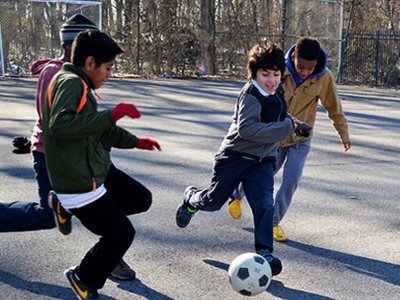Active Indoor Recess
Are your students restless from being cooped up inside due to rain or cold? Active indoor recess is a great way to get physically moving, regardless of space or equipment constraints.
Read More Did you know that it’s best practice to shift the school schedule so students play at recess first, then eat lunch? Schools that have adapted this model report that students eat more fruits and vegetables, drink more milk, waste less food, and are better behaved on the playground and classroom. Put simply, students feel like they have more time to eat lunch, and have worked up an appetite to eat all the major food groups.
Did you know that it’s best practice to shift the school schedule so students play at recess first, then eat lunch? Schools that have adapted this model report that students eat more fruits and vegetables, drink more milk, waste less food, and are better behaved on the playground and classroom. Put simply, students feel like they have more time to eat lunch, and have worked up an appetite to eat all the major food groups.
The recipe to having students eat healthy during lunch and be more alert during class is as easy as holding recess before lunch. Research has shown that recess before lunch has numerous positive effects on student’s overall health and wellness. Here are some steps to get started:
Be patient. Any new program takes time to implement successfully, especially when it impacts scheduling.
Scheduling is often the biggest hurdle. Get creative and flexible with your planning. Remind all involved that the goal and change is for the best interest of the kids.
Communicate early and often! It is important to get buy in from teachers and parents early on. Report out on the statistics and research on why recess before lunch is the best model. Continue to inform teachers and parents throughout the process and after the schedule has been implemented.
Students are more likely to be hungrier and thirstier with the change. Consider having a min-morning snack option.
Determine an easily accessible location for cold lunches.
Categories: Physical Activity & Play, At School, Digital Resource